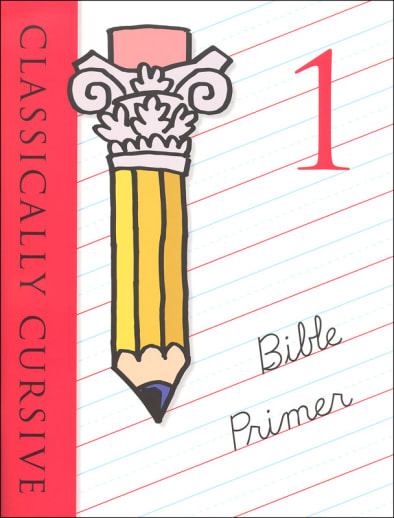Classically Cursive Bible Primer Book 1(color
Description
Second grade is the best age to teach children cursive writing. The Classically Cursive Series is geared to follow the Phonics Museum, or any program using modern manuscript. Why have children write random sentences when they can be copying Scripture or the catechism instead? The Classically Cursive Series books are designed to teach cursive handwriting. In book 1 students learn the formation of upper and lower case letters.
Classically Cursive: Bible Primer is book 1 in a series of 4.
The Classically Cursive program from Veritas Press focuses students on God as they cultivate good handwriting skills.
Book 1: Bible Primer reviews modern manuscript before introducing the lowercase modern cursive letters one at a time. Numbers and arrows indicate the correct strokes for forming each letter, and children practice tracing over gray letters before writing letters on their own. The rest of each page encourages students to form a series of that letter connected together and practice small given words. The cursive capital alphabet is then introduced and practiced before students end by neatly copying the books of the Bible and several verses on the lined pages which follow.
Book 2: Ten Commandments provides a complete review of the skills learned in the first, with pages again devoted to each uppercase and lowercase letter and more practice with small words and connecting a series of the same letter. At the end of this book, students carefully copy the Ten Commandments. The last two books in the series offer continued reinforcement through copying a series of passages on smaller ruled lines in the third and lines with no rule in the fourth.
Book 3: Shorter Catechism copies the Westminster Shorter Catechism on smaller ruled lines.
Book 4: The Attributes of God concentrates on the attributes of God (on lines without rule) using content taken from the Bible (New King James version) and hymns.
| Product Format: | Softcover Book |
|---|---|
| Grades: | 2-4 |
| Brand: | Veritas Press |
| ISBN: | 9781950271146 |
| Length in Inches: | 11 |
| Width in Inches: | 8.5 |
| Height in Inches: | 0.25 |
| Weight in Pounds: | 0.55 |

